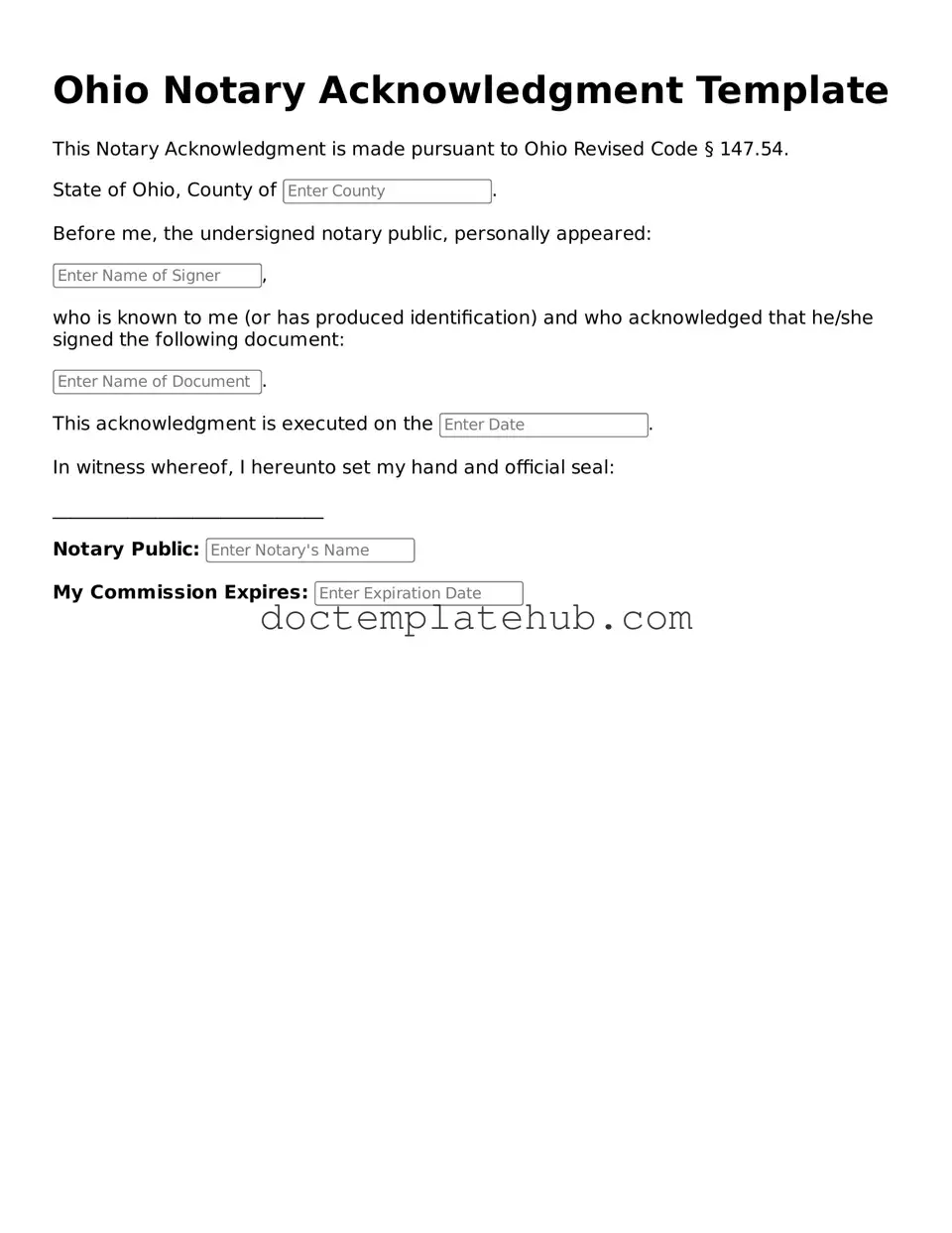What is an Ohio Notary Acknowledgement form?
The Ohio Notary Acknowledgement form is a document that verifies the identity of a signer and confirms that they willingly signed a document. It is often used in legal transactions to ensure that the signature is authentic and that the signer understands the content of the document they are signing.
Who can serve as a notary in Ohio?
In Ohio, a notary public must be at least 18 years old, a resident of Ohio, or have a place of business in the state. They must also complete the necessary training and pass an exam to become commissioned. Once commissioned, notaries can perform acknowledgements, administer oaths, and more.
Why is a Notary Acknowledgement important?
A Notary Acknowledgement is important because it adds a layer of protection against fraud. It ensures that the person signing the document is who they say they are and that they are signing voluntarily. This can be crucial in legal matters where the authenticity of a signature is questioned.
What information is required on the Notary Acknowledgement form?
The form typically requires the name of the signer, the date of the acknowledgment, the notary's name, and their signature. It may also include the notary's seal and the details of the document being acknowledged. Each section must be filled out accurately to ensure the form is valid.
How do I find a notary in Ohio?
Finding a notary in Ohio is relatively easy. You can search online for notary services, check with local banks, or visit law offices. Many public libraries and government offices also have notaries available. Make sure to call ahead to confirm their availability and any fees they may charge.
Can a notary charge for their services?
Yes, a notary in Ohio can charge a fee for their services. The maximum fee is set by law, and it can vary depending on the type of service provided. Always ask about fees before getting a document notarized to avoid any surprises.
Is a Notary Acknowledgement the same as a notarized signature?
While both terms are related, they are not the same. A notarized signature refers to the actual act of a notary witnessing a signature. A Notary Acknowledgement is a specific type of notarization that confirms the signer’s identity and intent to sign the document. Both processes serve to authenticate a signature.
Can I use an Ohio Notary Acknowledgement form for documents from other states?
Generally, an Ohio Notary Acknowledgement form can be used for documents intended for use in Ohio. However, if the document is for use in another state, it is advisable to check that state's requirements. Some states may have specific forms or additional requirements for notarization.
How long is a Notary Acknowledgement valid?
A Notary Acknowledgement does not have a specific expiration date. However, the validity of the document itself may depend on the laws governing the type of document being acknowledged. It is always best to check the specific requirements related to the document to ensure it remains valid.
What should I do if my Notary Acknowledgement is rejected?
If your Notary Acknowledgement is rejected, first ask for the reason. It could be due to missing information or an error in the notarization process. If necessary, you may need to have the document re-notarized. Ensure that all required information is complete and accurate to prevent future issues.
